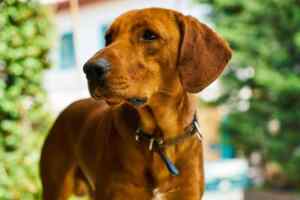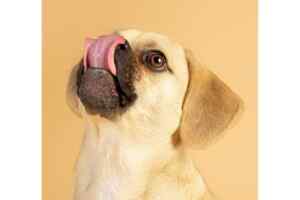Introduction: The Puggle – A Unique Canine Hybrid
The Puggle, a crossbreed between a Beagle and a Pug, is a delightful and popular choice for dog lovers seeking a unique and lovable companion. This hybrid breed combines the best traits of both parent breeds, resulting in a charming and affectionate dog that is sure to steal your heart.
In this article, we will explore the origins of the Puggle, its physical characteristics, temperament and personality, exercise and training needs, health considerations, grooming and maintenance requirements, feeding and nutrition, ideal living arrangements, socialization and interaction with other pets, and its compatibility as a family pet.

The Origins of the Puggle: Beagle and Pug Mix
The Puggle originated in the United States during the 1980s when breeders sought to create a small, low-shedding dog with the friendly and sociable nature of a Beagle and the adorable appearance of a Pug.
By crossing these two breeds, they successfully created the Puggle, a hybrid that quickly gained popularity due to its unique characteristics. Today, the Puggle is recognized by various canine organizations and is loved by dog enthusiasts worldwide.
Physical Characteristics: A Perfect Blend of Beagle and Pug Traits

The Puggle inherits physical traits from both parent breeds, resulting in a charming and distinctive appearance. They typically have a sturdy and compact body, with a broad chest and a well-muscled frame. Their head is round and slightly wrinkled, reminiscent of the Pug, while their ears are long and droopy like those of a Beagle.
Puggles have a short, dense coat that can come in a variety of colors, including fawn, black, and tan, or a combination of these. Their expressive eyes are usually dark and soulful, adding to their overall appeal.
Temperament and Personality: What to Expect from a Puggle

Puggles are known for their friendly and outgoing nature, making them excellent companions for individuals and families alike. They inherit the sociability and playfulness of the Beagle, combined with the affectionate and easygoing nature of the Pug.
Puggles are known to be great with children and seniors, as they are patient and gentle. They thrive on human companionship and enjoy being part of a family. Puggles are also known for their intelligence, which can make training them a rewarding experience.
Exercise and Training: Meeting the Needs of a Puggle

Puggles have moderate exercise needs and enjoy daily walks, playtime, and mental stimulation. They have a moderate energy level, which can be satisfied with regular exercise routines.
Puggles are intelligent and eager to please, making them relatively easy to train. Positive reinforcement methods, such as treats and praise, work well with this breed. Early socialization and obedience training are essential to ensure a well-rounded and well-behaved Puggle.
Health Considerations: Common Issues in Puggles

Like all dog breeds, Puggles are prone to certain health issues. Some common health concerns in Puggles include hip dysplasia, patellar luxation, allergies, and eye problems.
It is important for potential owners to be aware of these potential health issues and to choose a reputable breeder who conducts health screenings on their breeding dogs. Regular veterinary check-ups and a balanced diet can help maintain the overall health and well-being of a Puggle.
Grooming and Maintenance: Caring for Your Puggle’s Coat

Puggles have a short, dense coat that requires minimal grooming. Regular brushing with a soft-bristle brush will help remove loose hair and keep their coat looking shiny and healthy.
Bathing should be done as needed, typically every few months or when they get dirty. Puggles are moderate shedders, so regular grooming can help minimize shedding. Additionally, it is important to regularly check their ears, trim their nails, and brush their teeth to maintain their overall hygiene.
Feeding and Nutrition: Dietary Requirements for a Puggle

Puggles have moderate appetites and should be fed a balanced diet that meets their nutritional needs. High-quality dog food, whether commercially prepared or homemade, should be the foundation of their diet.
The amount of food required will depend on the Puggle’s age, size, activity level, and metabolism. It is important to monitor their weight and adjust their food intake accordingly to prevent obesity, which can lead to various health issues.
Living with a Puggle: Ideal Environments and Living Arrangements
Puggles are adaptable and can thrive in various living environments, including apartments, houses, and rural areas. They are generally well-suited for both city and country living, but they do require regular exercise and mental stimulation.
Puggles are social dogs and prefer to be with their human family members, so they may not do well if left alone for long periods. They are also sensitive to extreme temperatures, so it is important to provide them with a comfortable living environment.
Socialization and Interaction: How Puggles Get Along with Other Pets
Puggles are generally friendly and sociable with other pets, including dogs and cats, especially if they are properly socialized from a young age. Early socialization is crucial to ensure that they develop positive relationships with other animals.
Supervised introductions and gradual interactions can help them become comfortable and friendly with other pets. However, it is important to remember that each dog is an individual, and some Puggles may have a stronger prey drive or be less tolerant of other animals.
Puggle as a Family Pet: Compatibility with Children and Seniors
Puggles are known for their friendly and patient nature, making them excellent family pets. They are generally good with children and can tolerate their playful antics.
However, as with any dog, it is important to supervise interactions between Puggles and young children to ensure the safety of both parties. Puggles also make great companions for seniors, as they are affectionate, low-maintenance, and provide emotional support.
Conclusion: Is the Puggle the Right Dog for You?
The Puggle, a unique blend of Beagle and Pug, is a lovable and charming companion that brings joy to many households. With their friendly and sociable nature, moderate exercise needs, and adaptability to various living environments, Puggles can make great pets for individuals and families alike.
However, it is important to consider their health considerations, grooming needs, and the time and effort required for training and socialization. If you are looking for a friendly, affectionate, and adaptable canine companion, the Puggle may be the perfect dog for you.
Further Online Resources About Puggles
- Puggle.org: A website dedicated to providing information about Puggles, including their characteristics, care, and common health issues.
